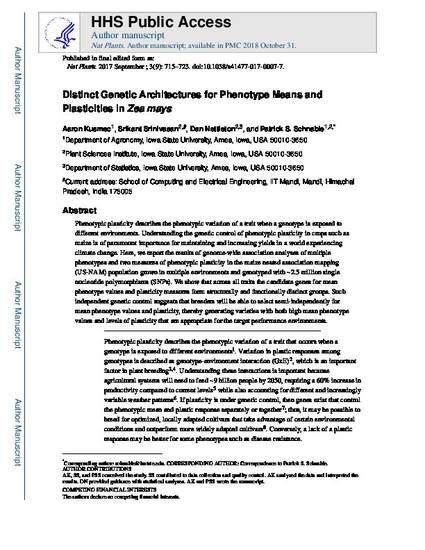
Phenotypic plasticity describes the phenotypic variation of a trait when a genotype is exposed to different environments. Understanding the genetic control of phenotypic plasticity in crops such as maize is of paramount importance for maintaining and increasing yields in a world experiencing climate change. Here, we report the results of genome-wide association analyses of multiple phenotypes and two measures of phenotypic plasticity in a maize nested association mapping (US-NAM) population grown in multiple environments and genotyped with ~2.5 million single-nucleotide polymorphisms. We show that across all traits the candidate genes for mean phenotype values and plasticity measures form structurally and functionally distinct groups. Such independent genetic control suggests that breeders will be able to select semi-independently for mean phenotype values and plasticity, thereby generating varieties with both high mean phenotype values and levels of plasticity that are appropriate for the target performance environments.
Available at: http://works.bepress.com/dan-nettleton/114/

This is a manuscript of an article published as Kusmec, Aaron, Srikant Srinivasan, Dan Nettleton, and Patrick S. Schnable. "Distinct genetic architectures for phenotype means and plasticities in Zea mays." Nature plants 3, no. 9 (2017): 715. doi: 10.1038/s41477-017-0007-7. Posted with permission.